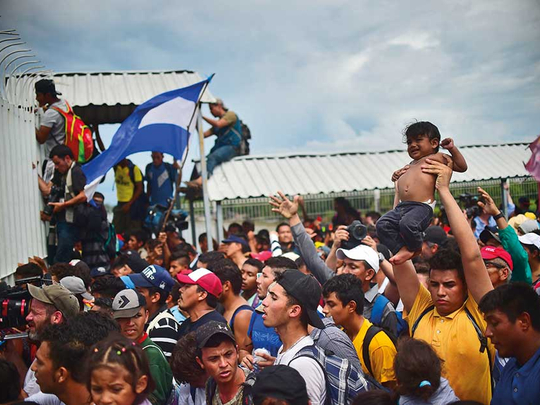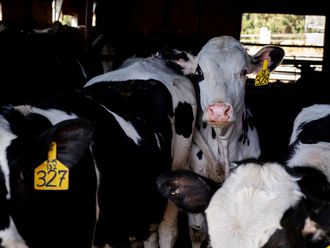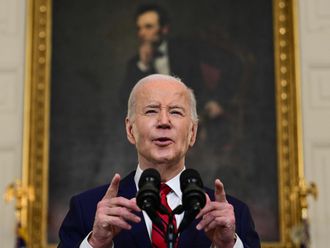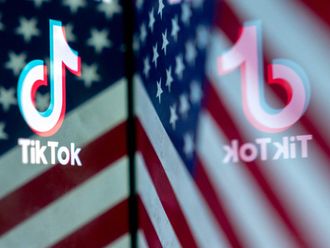
Mexico City: As thousands of Central American migrants inched closer to Mexico’s southern border, Secretary of State Mike Pompeo met with top officials here, hoping to avert the caravan before it reaches the United States.
By Friday morning, at least a thousand migrants had arrived in the city of Tecun Uman, in northern Guatemala, and by early afternoon, they began walking across a bridge connecting the two countries, even as Mexico deployed additional police along the border. A huge group waited to be processed by Mexican authorities, punctuated by moments of disorder, as police fired tear gas into the crowd.
“We are quickly reaching a point which appears to be a moment of crisis” with the flow of Central American migrants, Pompeo said in a joint appearance with Mexico’s foreign minister, Luis Videgaray.
Mexican authorities, in search of a way both to satisfy President Donald Trump’s demand that they deter the migrants and to avoid violating international law, have asked the United Nations to set up a migrant processing centre near their southern border. Pompeo said in a statement that he welcomed that plan.
During the joint appearance Friday, he added: “The way you will handle this is your sovereign decision.”
But as Trump said at a rally on Thursday that the midterm elections would hinge in part on the caravan, it was clear that US pressure on Mexico would continue.
The members of the caravan appeared unlikely to wait for the United Nations. On Friday, many migrants approached border crossings where Guatemalan police officers appeared prepared to block their passage, but by the early afternoon they broke through a fence on the Guatemalan side, forcing their way to the Mexican side of the bridge. Mexican authorities used riot gear to dispel some of the migrants, telling them to be prepared to wait for processing.
Before leaving by plane, Pompeo said four policemen had been injured, and he blamed the caravan for using women and children as shields. In response to the deployment of Mexican police, Trump tweeted, “Thank you Mexico,” on Thursday, just hours after threatening to deploy the US military and “close our southern border” — potentially upending a recent trade deal with Mexico and Canada.
His threats have kept pace with the migrants’ journey. As they were passing though Guatemala, he threatened to withdraw aid from Central American nations if they did not stop the migrants. Paradoxically, much of that aid is used in programs aimed at deterring migration.
Speaking at the joint news conference, Videgaray said the Mexican government would enforce the country’s immigration laws, “in a humanitarian form, thinking first of the interest of the migrant.”
Videgaray also emphasised the need for the United States to promote anti-poverty programs in Central America, calling a lack of economic development among the “major reasons for migration.”
Even with additional border security personnel, it is unlikely that Mexico could detain the thousands of migrants who appear likely to cross into the country in the coming days. Typically, migrants use rafts to float across informal border crossings.
Mexican officials will have to decide how to handle the migrants who continue travelling by foot and in vehicles toward the southern border, a journey that could take weeks. Earlier this year, during a previous migrant caravan, Mexico ultimately registered the migrants and gave them permits of up to 30 days to leave the country or apply for asylum.
The migrant caravans have been occurring for years, offering a safe way for migrants to make their way north, while also intending to draw attention to the plight of the region’s more desperate people. But before the Trump Administration, they attracted little attention. Although there might be as many as 3,000 or 4,000 people in the current caravan, that number is dwarfed by the more than 450,000 people who have been apprehended along the US-Mexico border this year.
Immigration advocates and experts on international refugee law say that providing transit documents to those in search of protection would be the reasonable and humane response. But that would probably enrage Trump, who appears to see it as Mexico’s responsibility to stop the migrants from reaching the US border by any means.
Pompeo’s trip to Mexico was planned before the caravan, but on Friday he referred to it as “the largest issue that we face today,” now that the trade deal with Mexico has been hammered out.
Some immigrant advocates said they were pleased by Mexico’s call to involve the United Nations in the processing of asylum seekers.
“It tells me that Mexico recognises the protection dimension here as well as its own incapacity to process” members of the caravan, said Bill Frelick, director of the refugee rights program at Human Rights Watch.
But Mexican officials have not said what role they would like the United Nations to play.
“Specific information on the support provided by the UNHCR regarding the processing of refugee applications and support for the applicants during their stay in Mexico will be made public as soon as a formal response is received,” Mexico’s foreign ministry said in a Thursday statement.












